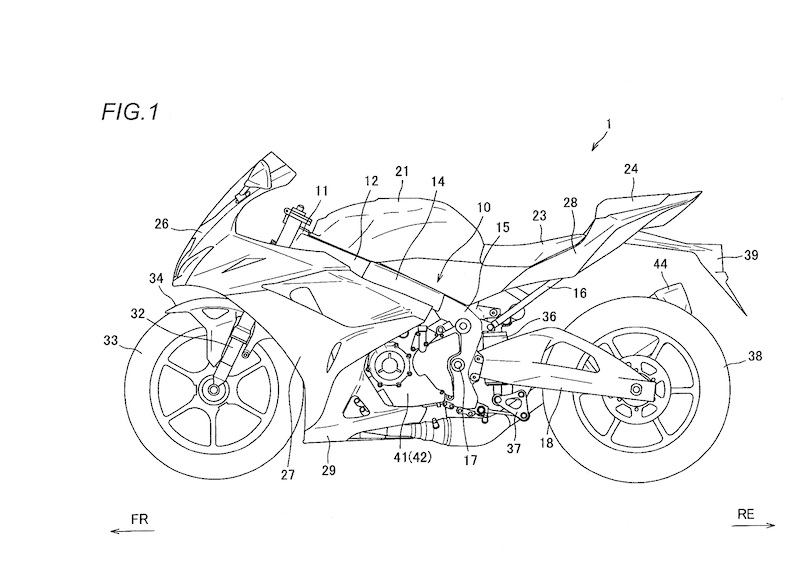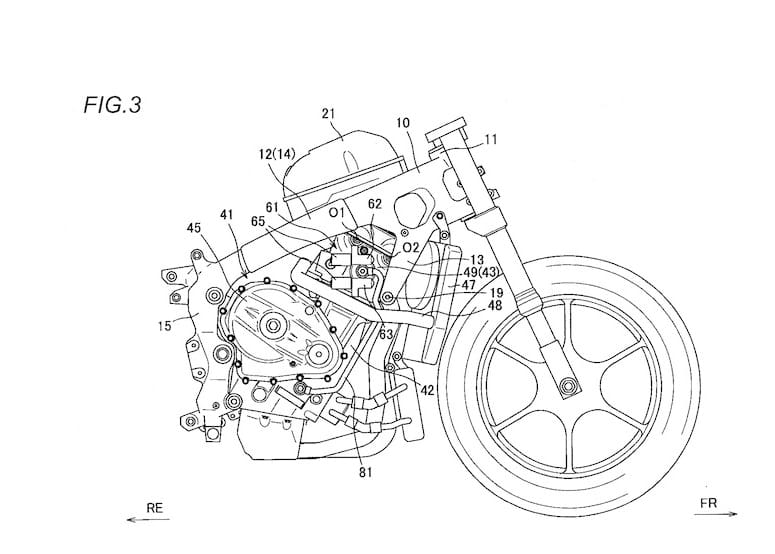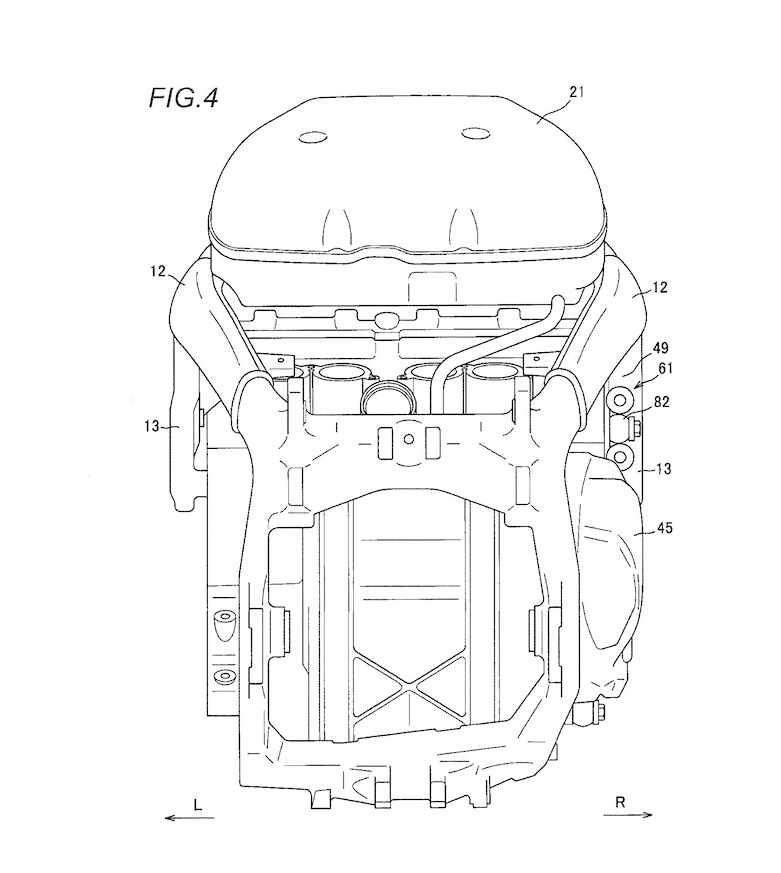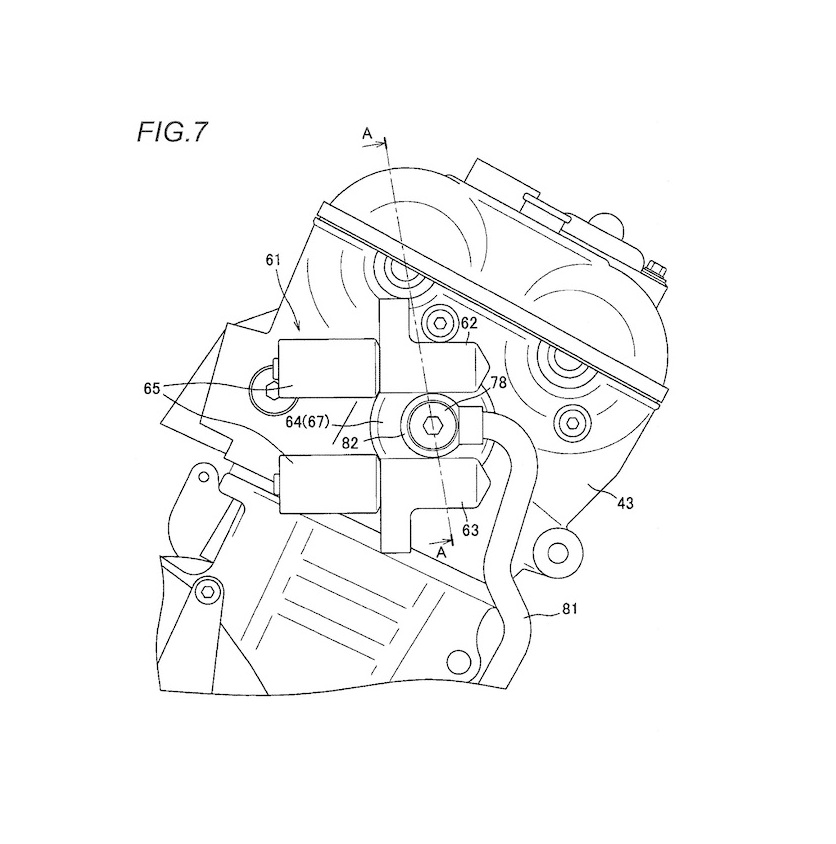New patent applications from Suzuki suggest improved variable valve timing on its next-generation GSX-R1000 superbike.
While the existing GSX-R1000 broke new ground for the superbike class by including variable valve timing, the system is limited by the fact it operates using an unusual, purely mechanical design that works only on the intake camshaft. The new patent applications show electronic control of both the intake and exhaust camshafts.
Suzuki’s current system is based on its GSX-RR MotoGP racer. To sneak around MotoGP restrictions on electronic and hydraulically operated variable valve timing, Suzuki developed an all-mechanical system relying on centrifugal force to alter the cam timing.
Its new patents reveal a much more conventional system using oil pressure-operated cam-phasers to rotate the camshafts a few degrees in relation to their sprockets. It’s the same arrangement used by Ducati on the Diavel and Multistrada DVT models, and the one most commonly used on cars. The engine management computer decides when the cam timing should be advanced or retarded, and by how much, using solenoids to alter oil pressure and flow to the cam-phasers.
Suzuki’s patent applications are related to the layout of the system, with the oil control valve unit mounted on the side of the cylinder head to keep it cool. While the drawings show the setup fitted to a GSX-R1000, Suzuki is careful to say in the patent application that it could fit the same system to many other engines in its range, including singles, parallel twins or vees.
By Ben Purvis





